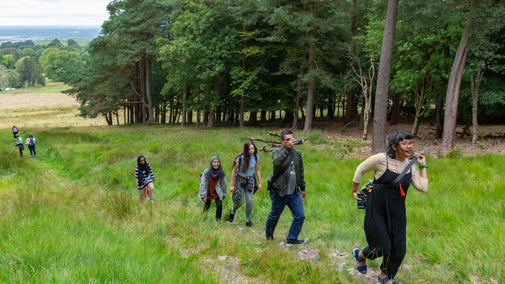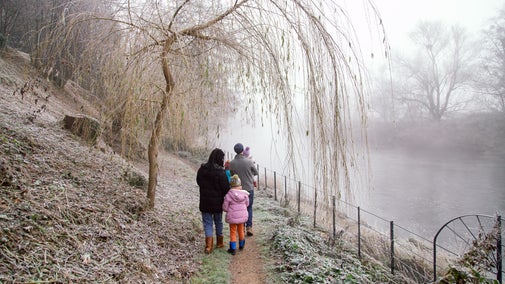Bridgewater Monument to Pitstone Windmill circular walk
Oxfordshire, Buckinghamshire & Berkshire
This walk links two of the best reasons to visit the Ashridge Estate – the Bridgewater Monument and the ancient post mill. The walk features great views across the Chilterns and the Vale of Aylesbury, especially if you get the chance to climb the monument.
Near to
Pitstone WindmillStart point
Bridgewater Monument car park. Grid ref: SP97001310. Postcode: HP4 1LXTrail information
Road safety
Please note that this trail does include some walking on the road and may not be suitable for families with young children. Crossing can be difficult in places and there are no verges (see steps 4 and 9).
More near here
Whipsnade and Dunstable Downs walk
Essex, Bedfordshire & HertfordshireSuitable for more energetic families, the Whipsnade and Dunstable Downs walk offers wonderful views across the Downs.

Dunstable Downs countryside walk
Essex, Bedfordshire & HertfordshireFollow this moderately difficult circular route through Dunstable Downs, discovering diverse wildlife, ancient tracks and burial mounds.

Coombe Hill and Chequers trail
Enjoy a moderately energetic circular walk from Coombe Hill, taking in views across the Aylesbury Vale. You'll wander through woodlands, past rare chalk grassland and the pretty village of Ellesborough.

Hambleden Mill to Henley-on-Thames circular river walk
This circular Thames walk takes in a historic watermill, the Henley Regatta course, views across the Thames Valley and quiet stretches of river with the chance to spot wildlife.

Get in touch
Our partners

We’ve partnered with Cotswold Outdoor to help everyone make the most of their time outdoors in the places we care for.
You might also be interested in
Walking
Explore some of the finest landscapes in our care on coastal paths, accessible trails, woodland walks and everything in between. Find the best places to walk near you.

Staying safe at National Trust places
The special places in National Trust care sometimes come with a few risks for visitors, be it coastline or countryside. Find out how to keep safe throughout your visits.

Cotswold Outdoor: our exclusive walking partner
Learn about the National Trust’s ongoing partnership with Cotswold Outdoor. Find out how they help us care for precious places and the exclusive discount available for National Trust supporters.

Walking in Oxfordshire, Buckinghamshire and Berkshire
From gentle strolls for little legs to longer hikes through the rolling Chiltern hills, these are some of the best walks in Oxfordshire, Buckinghamshire and Berkshire.


